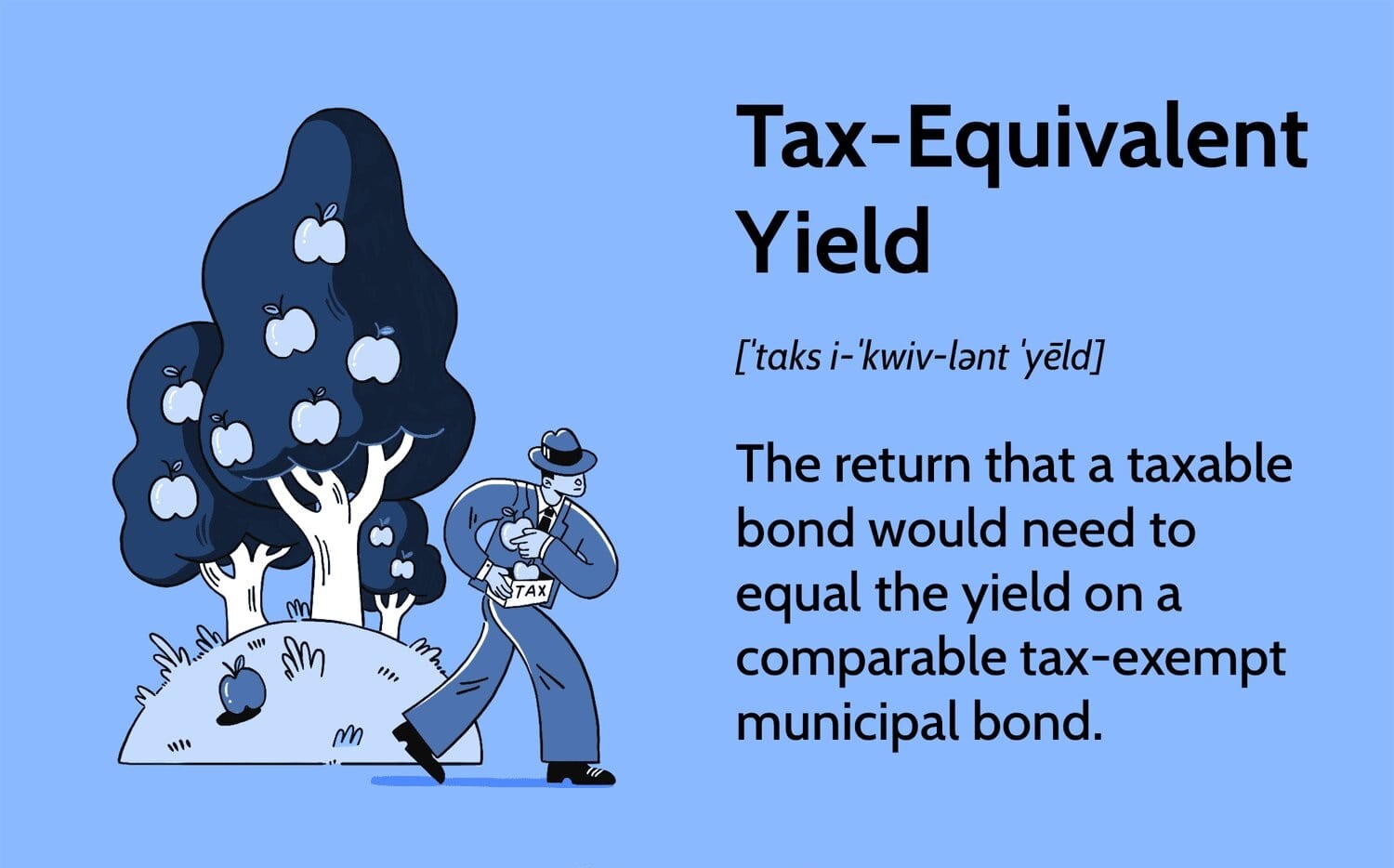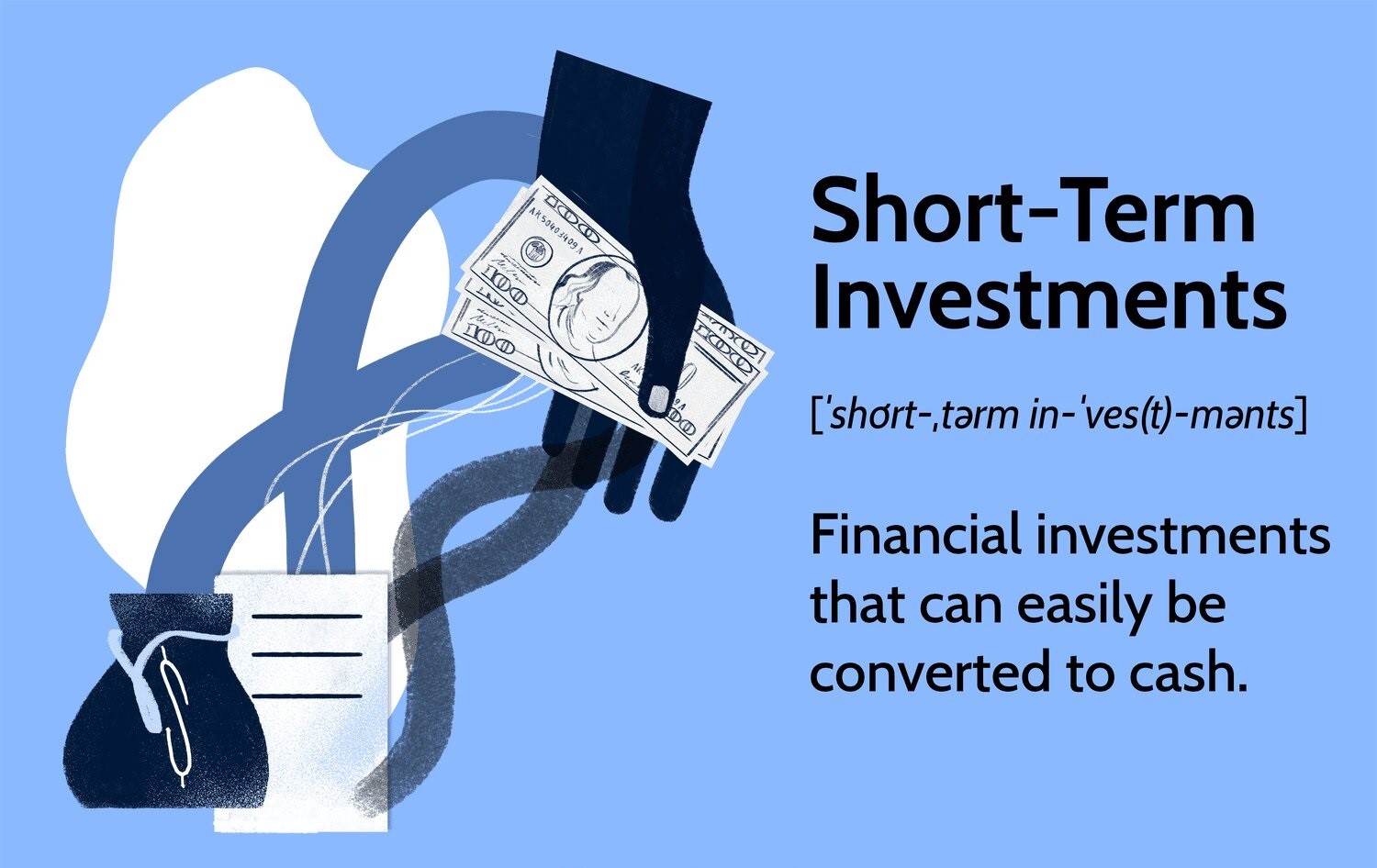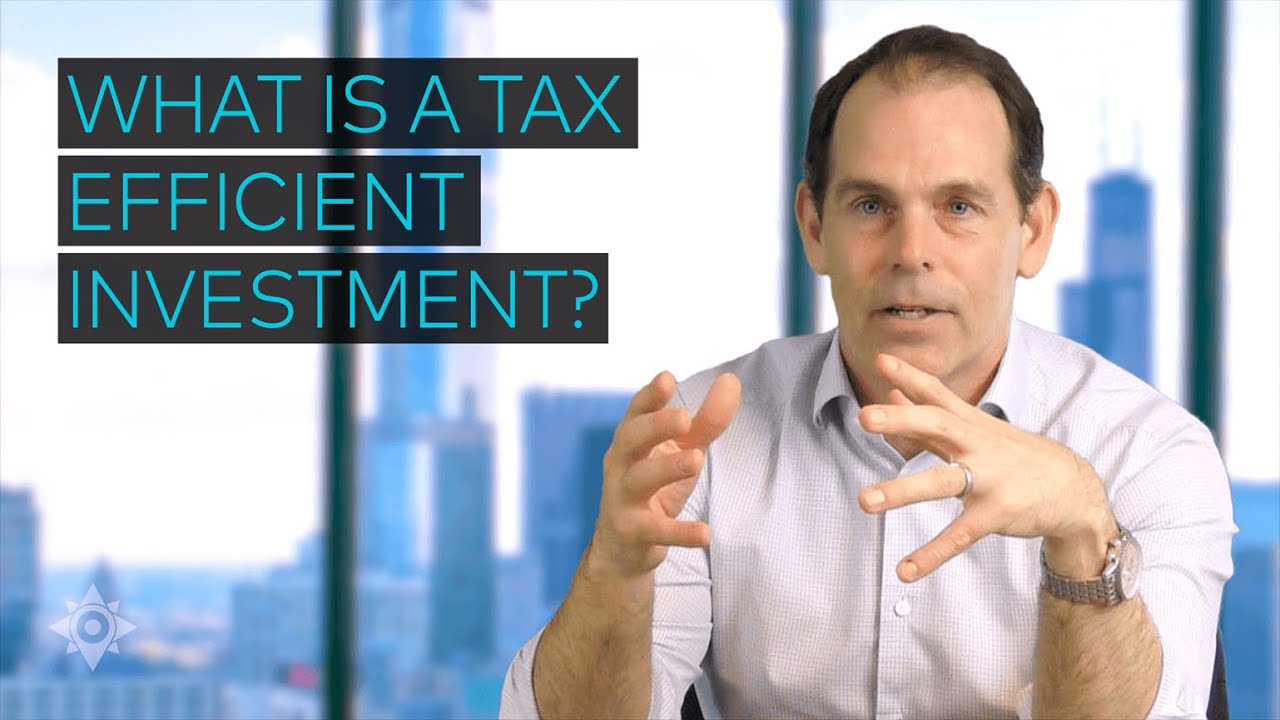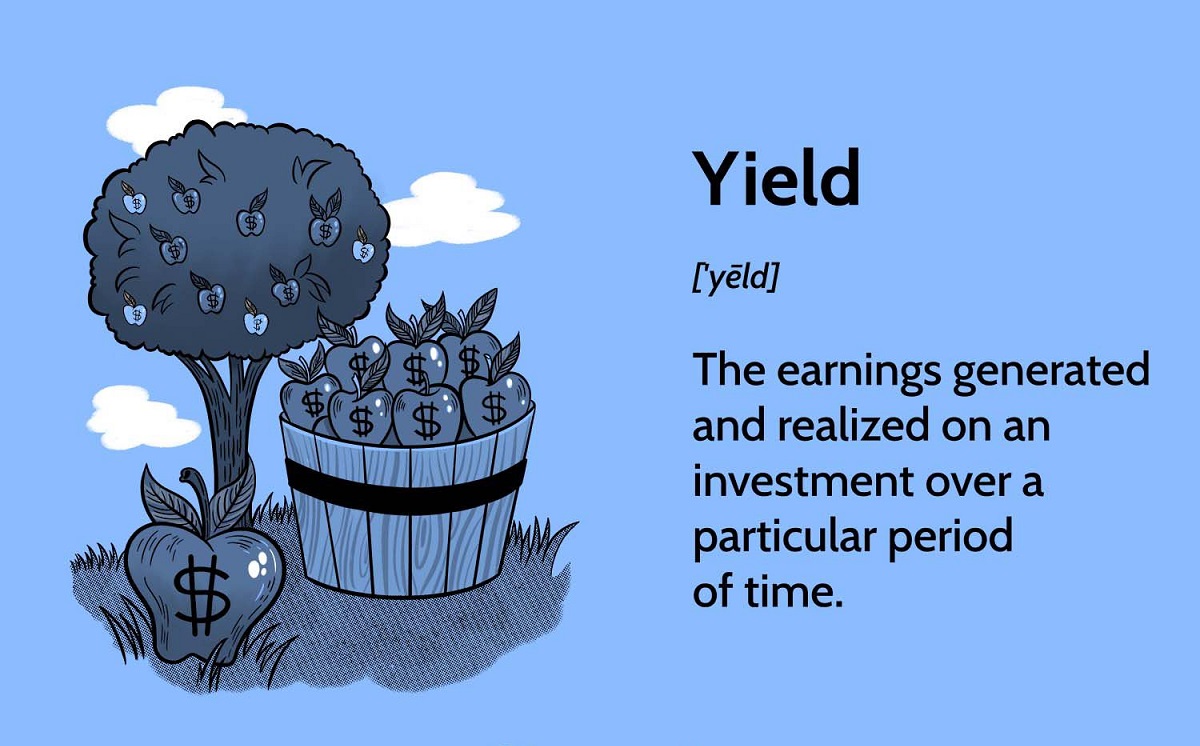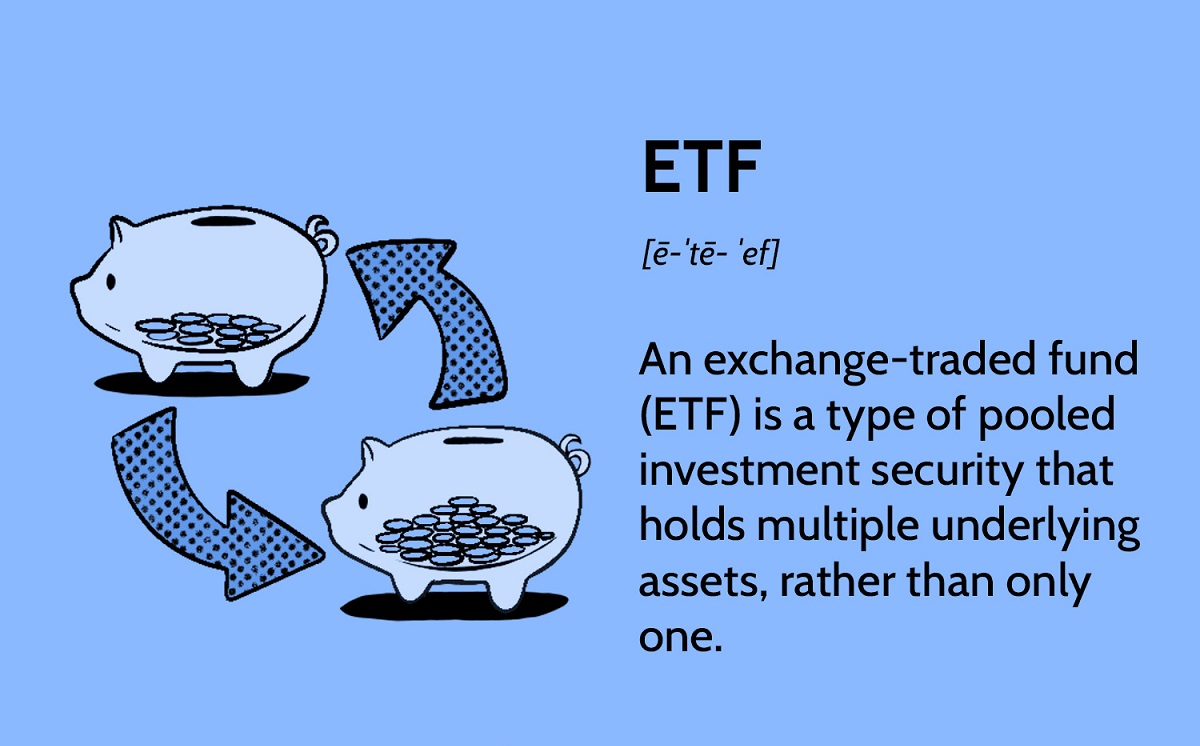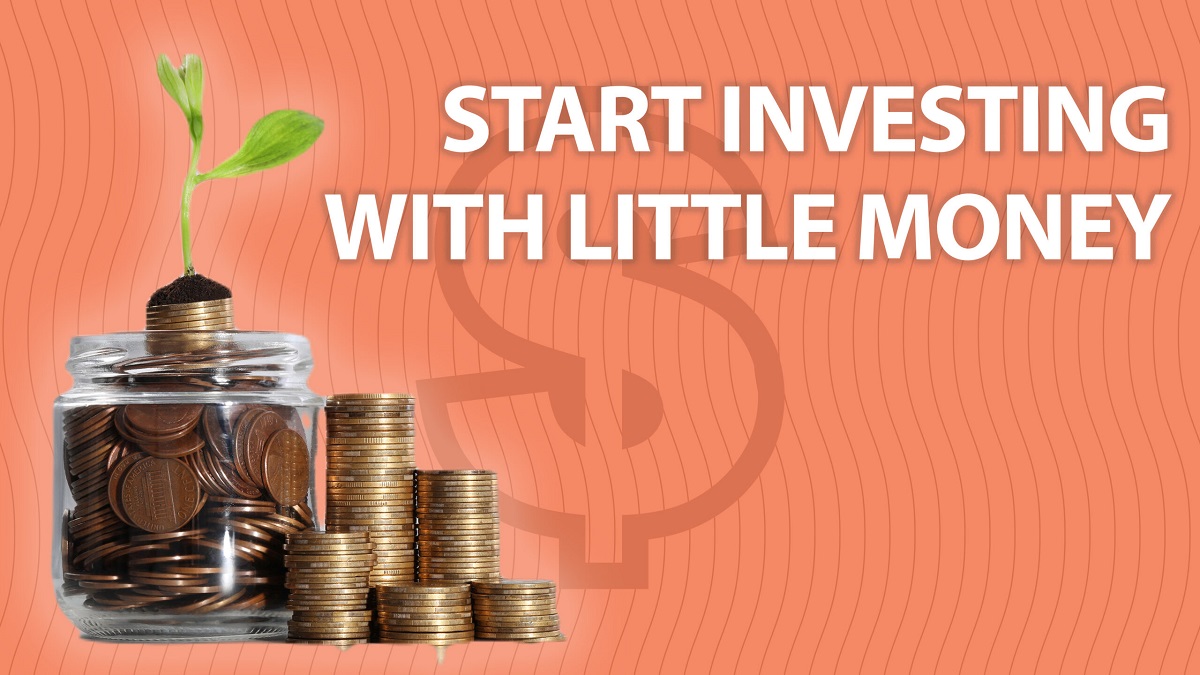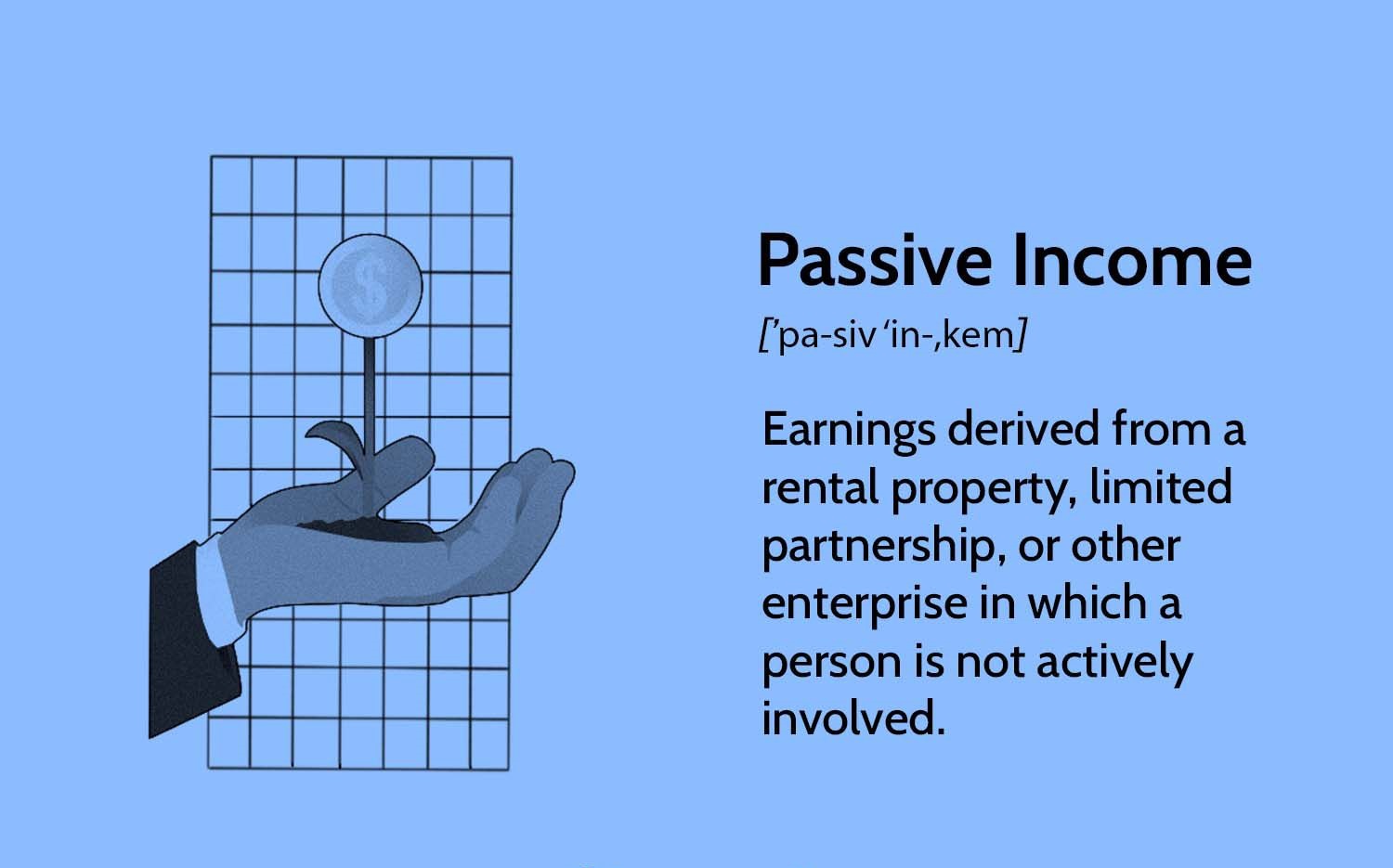Introduction
Welcome to our comprehensive guide on how to buy tax yield investments. If you’re looking to grow your wealth while minimizing your tax liability, tax yield investments can be an excellent choice. In this guide, we will walk you through everything you need to know to make informed investment decisions.
Tax yield investments are investment vehicles that provide a steady income stream while offering potential tax benefits. These investments include a wide range of options, such as municipal bonds, real estate investment trusts (REITs), dividend stocks, and tax-efficient mutual funds.
Many investors are drawn to tax yield investments because of the potential tax advantages they offer. These investments can provide income that is tax-free, tax-deferred, or subject to lower tax rates. By strategically incorporating tax yield investments into your portfolio, you can reduce your overall tax burden and enhance your after-tax returns.
Before diving into the details of how to buy tax yield investments, it’s important to understand the benefits they provide. These investments not only offer the potential for regular income but can also help diversify your portfolio, mitigate risk, and provide stability in uncertain market conditions.
When it comes to investing in tax yield investments, there are several key factors to consider. Your risk tolerance, investment goals, time horizon, and current financial situation will all play a role in determining the most suitable tax yield investments for you. It’s crucial to thoroughly research and understand the different investment options available to make well-informed decisions.
Furthermore, it’s essential to establish a budget specifically designated for tax yield investments. By setting a budget, you can ensure that your investment decisions align with your overall financial goals and avoid overextending yourself.
Choosing the right broker is another critical aspect of buying tax yield investments. A reputable and reliable broker can provide valuable guidance, access to a wide range of investment options, and excellent customer service. It’s important to evaluate brokers based on factors such as fees, investment selection, and their level of expertise in tax yield investments.
In the following sections, we will provide step-by-step guidance on how to research tax yield investments, set a budget, choose the right broker, and ultimately make your purchase. We will also discuss tax planning strategies specific to yield investments and provide insights into the potential risks and how to mitigate them.
By the end of this guide, you will have a comprehensive understanding of tax yield investments and the knowledge to confidently navigate the process of buying them. So let’s dive in and explore this exciting investment opportunity.
Understanding Tax Yield Investments
Before delving into the process of buying tax yield investments, it is crucial to have a solid understanding of what they are and how they work. Tax yield investments are investment vehicles that provide a consistent stream of income while offering potential tax advantages.
One of the most common types of tax yield investments is municipal bonds. These are debt securities issued by state and local governments to fund various projects such as infrastructure development, schools, and hospitals. The interest income generated from municipal bonds is typically exempt from federal income taxes and, in some cases, state and local taxes as well. This tax advantage makes them an attractive option for investors seeking tax-efficient income.
Real estate investment trusts (REITs) are another popular choice among tax yield investments. A REIT is a company that owns, operates, or finances income-generating real estate properties. By investing in REITs, individuals can earn regular dividend income while potentially benefiting from tax advantages. REIT dividends may qualify for special tax treatment, such as being taxed at a lower rate or being considered return of capital.
Dividend stocks are also considered tax yield investments as they provide investors with a recurring cash flow in the form of dividend payments. In some cases, qualified dividend income can be taxed at a lower rate than ordinary income. This can be advantageous for individuals in higher tax brackets looking to maximize their after-tax returns.
Tax-efficient mutual funds are investment vehicles that aim to minimize tax liabilities for their investors. These funds employ strategies such as investing in tax-friendly securities, tax-loss harvesting, and managing capital gains distributions. By investing in tax-efficient mutual funds, investors can potentially reduce their tax burdens and keep more of their investment returns.
When considering tax yield investments, it’s important to note that the tax advantages they offer can vary depending on individual circumstances and the specific investment vehicle. It is recommended to consult with a tax professional to fully understand the tax implications of your investment decisions.
Investing in tax yield investments can provide a range of benefits beyond just tax advantages. These investments can help diversify your portfolio, reducing the overall risk in your investment holdings. They can also provide stability and income generation, particularly during times of market volatility.
However, it’s essential to balance the potential benefits of tax yield investments with the associated risks. Like any investment, tax yield investments are not without their challenges. It’s crucial to carefully evaluate the financial health and performance of the investment options, as well as consider factors such as interest rate risk, credit risk, and liquidity.
Now that we have gained a solid understanding of tax yield investments, let’s explore the benefits they offer and the factors to consider before making any investment decisions.
Benefits of Tax Yield Investments
Tax yield investments offer a range of benefits that make them an attractive option for investors. In this section, we will explore some of the advantages these investments provide.
One of the primary benefits of tax yield investments is their potential to generate a steady income stream. Whether it’s through interest payments from municipal bonds or dividends from dividend stocks and REITs, tax yield investments can provide a consistent cash flow. This regular income can be especially valuable for individuals looking to supplement their retirement income or meet specific financial goals.
Additionally, tax yield investments offer potential tax advantages. By investing in tax-efficient vehicles, investors can minimize their tax liability, maximizing their after-tax returns. For example, with municipal bonds, the interest income is often exempt from federal taxes and, in some cases, state and local taxes as well. This tax advantage can significantly enhance the investment’s overall return, allowing investors to keep more of their earnings.
Another benefit of tax yield investments is diversification. Adding tax yield investments to a portfolio can help spread the risk across different asset classes, reducing the overall volatility of the investment holdings. This diversification can provide stability and protect against significant losses that may occur in any one investment or market segment.
Furthermore, tax yield investments can offer stability and income generation during periods of market volatility. While other investments may experience price fluctuations, tax yield investments, such as dividend stocks and REITs, can provide a consistent cash flow. This income can help offset any potential losses in other areas of the portfolio and provide a reliable source of income.
Moreover, tax yield investments can be an excellent tool for long-term wealth creation and preservation. By reinvesting the income generated from these investments, individuals can take advantage of compounding returns, potentially accelerating the growth of their investment portfolio over time. This compounding effect can be particularly beneficial when considering the tax advantages associated with these investments.
Lastly, tax yield investments can align with specific investment goals and strategies. For investors seeking income-producing assets, tax yield investments can provide a reliable and predictable source of cash flow. In contrast, for individuals focused on tax planning and wealth preservation, these investments offer opportunities to minimize tax liabilities and reduce the overall tax burden.
It’s important to note that while tax yield investments offer numerous benefits, they also come with risks. Understanding these risks and carefully evaluating the investment options is crucial before making any investment decisions. In the next section, we will discuss the factors to consider when researching tax yield investments, helping you make informed choices.
Factors to Consider Before Investing
Before diving into tax yield investments, there are several key factors that you should consider. These factors will help you make informed investment decisions that align with your financial goals and risk tolerance. Let’s explore the most important factors to consider:
- Investment Objectives: Clearly defining your investment objectives is essential before investing in tax yield investments. Are you looking for current income, long-term growth, or a combination of both? Understanding your objectives will guide your investment strategy and help you select the most appropriate tax yield investments.
- Risk Tolerance: Assessing your risk tolerance is crucial in determining the right mix of investments for your portfolio. Consider how comfortable you are with potential fluctuations in the value of your investments and the possibility of temporary declines in income. This will help you determine the level of risk you are willing to accept and choose the appropriate tax yield investments accordingly.
- Time Horizon: Your time horizon is another important factor to consider. Determine whether you have a short-term or long-term investment horizon. Generally, the longer your time horizon, the more risk you can afford to take as you have more time to recover from any potential downturns.
- Financial Situation: Evaluate your current financial situation, including your income, expenses, and existing investments. Consider if you have sufficient emergency savings, insurance coverage, and a diversified portfolio. It’s important to ensure that investing in tax yield investments fits within your overall financial plan.
- Tax Considerations: Understand the tax implications of the specific tax yield investments you are considering. While these investments offer potential tax advantages, the extent of those advantages will depend on factors such as your income tax bracket and the specific tax laws in your jurisdiction. Consult with a tax professional to uncover the potential tax implications.
- Investment Research: Thoroughly research the tax yield investments you are interested in. Understand the underlying assets, historical performance, risk factors, and management team. Review financial statements, prospectuses, and any other relevant information to make informed investment decisions.
- Diversification: As with any investment strategy, diversification is crucial. Consider spreading your investments across different asset classes, sectors, and geographic regions. This can help mitigate risk and enhance the potential for long-term growth.
- Costs and Fees: Evaluate the costs and fees associated with buying and owning tax yield investments. Consider factors such as expense ratios, transaction costs, and management fees. These costs can impact your overall investment returns, so it’s important to weigh them against the potential benefits.
Taking these factors into account will provide you with a solid foundation for making informed investment decisions in the realm of tax yield investments. By assessing your objectives, risk tolerance, time horizon, financial situation, and considering tax implications, you can select investments that align with your goals and maximize your potential for success.
Now that we have explored the factors to consider, let’s move on to the next section where we will discuss how to research tax yield investments effectively.
How to Research Tax Yield Investments
Researching tax yield investments is a crucial step in making informed investment decisions. Conducting thorough research will help you understand the investment options available, assess their suitability for your portfolio, and identify potential risks and opportunities. Here are some key steps to effectively research tax yield investments:
- Define Your Criteria: Start by clearly defining your investment criteria. Consider factors such as desired level of income, risk tolerance, time horizon, and specific tax advantages you are seeking. This will help narrow down your search and focus on investments that align with your goals.
- Utilize Reliable Sources: Use credible sources of information to gather data and insights about tax yield investments. These sources can include financial publications, reputable investment websites, industry reports, and government resources. Make sure to cross-reference information from multiple sources to gain a comprehensive understanding.
- Analyze Historical Performance: Assess the historical performance of the tax yield investments you are considering. Look at their past returns, consistency of income generation, and any significant volatile periods. It’s important to evaluate performance over multiple periods to gain a better understanding of the investment’s long-term track record.
- Study the Fundamentals: Dig deeper into the fundamentals of the investment options. This includes analyzing financial statements, understanding the underlying assets or securities, evaluating the investment strategy employed by the fund or issuer, and reviewing the expertise and track record of the fund managers or management team.
- Evaluate Risk Factors: Assess the risks associated with the tax yield investments. Consider factors such as interest rate risk, credit risk, market risk, and liquidity risk. Understanding the potential risks will help you determine if the investment aligns with your risk tolerance and overall investment strategy.
- Consider Tax Implications: Analyze the specific tax implications of each investment option. Review the tax treatment of the income generated, potential tax deductions or credits, and any tax reporting requirements. Consult with a tax professional to fully understand the tax advantages and ensure they align with your tax planning goals.
- Read Prospectuses and Disclosures: Carefully review the prospectuses, offering documents, and any other disclosure materials provided by the investment issuers or fund managers. These documents contain vital information about the investment objectives, risks, fees, and other important details that will help you make informed decisions.
- Consider Professional Advice: If you find the research process overwhelming or need additional expertise, consider seeking professional advice. Financial advisors, investment consultants, or tax professionals can provide valuable insights and guidance tailored to your specific needs and circumstances.
By following these steps and conducting thorough research, you will gain the knowledge and confidence needed to make informed decisions when investing in tax yield investments. Remember, investing involves risk, and it’s essential to stay informed and regularly monitor your investments to ensure they continue to align with your objectives.
Now that we have explored how to research tax yield investments effectively, let’s move on to the next section where we will discuss setting a budget specifically for tax yield investments.
Setting a Budget for Tax Yield Investments
Setting a budget is a crucial step when considering tax yield investments. It ensures that your investment decisions align with your overall financial goals and helps you manage your investment portfolio effectively. Here are some important factors to consider when setting a budget for tax yield investments:
- Evaluate Your Financial Situation: Start by evaluating your current financial situation. Consider your income, expenses, debt obligations, and existing investments. Understanding your overall financial picture will help you determine how much you can allocate towards tax yield investments.
- Define Your Investment Goals: Clearly define your investment goals and determine how tax yield investments fit into your financial plan. Are you looking for additional income, capital growth, or a combination of both? Having clear goals will help you allocate your budget accordingly.
- Assess Your Risk Tolerance: Consider your risk tolerance when setting a budget. If you have a low tolerance for risk, you may want to allocate a larger portion of your budget towards more conservative tax yield investments, such as municipal bonds. On the other hand, if you have a higher risk tolerance, you may be comfortable allocating a larger portion towards riskier investments, such as dividend stocks or real estate investment trusts (REITs).
- Consider Your Time Horizon: The length of time you have to invest can also impact your budget allocation. If you have a longer time horizon, you may have more opportunity to take on higher-risk investments and potentially benefit from compounding returns. For shorter time horizons, it may be prudent to allocate a larger portion towards more stable, income-generating tax yield investments.
- Review Tax Implications: Understand the tax implications of the tax yield investments you are considering. Different investments can have varying tax advantages and consequences. Consider consulting with a tax professional to determine the impact of these investments on your overall tax liability.
- Allocate Funds and Monitor: Once you have assessed your financial situation, goals, risk tolerance, time horizon, and tax implications, allocate a specific portion of your overall investment budget to tax yield investments. Continuously monitor the performance of your investments and make adjustments as needed.
Remember that setting a budget for tax yield investments should not compromise your overall financial well-being. It’s crucial to ensure that you have sufficient emergency savings and have addressed other financial priorities before allocating funds to investments.
Additionally, it’s recommended to diversify your investments across different asset classes and sectors to mitigate risk. Allocating your budget to a mix of tax yield investments alongside other investment options can help you achieve a well-rounded portfolio.
Lastly, regularly review your budget and make adjustments as your financial situation or goals change. Revisit your budget whenever there are significant life events or shifts in the economic landscape. Staying proactive and adaptable will help you make the most of your tax yield investment strategy.
With a well-defined budget in place, you can effectively navigate the process of investing in tax yield investments and work towards achieving your financial objectives.
Now that we have discussed setting a budget for tax yield investments, let’s move on to the next section where we will explore the importance of choosing the right broker.
Choosing the Right Broker
Choosing the right broker is a crucial step when buying tax yield investments. A reputable and reliable broker can provide valuable guidance, access to a wide range of investment options, and excellent customer service. Here are some important factors to consider when selecting a broker:
- Reputation and Trustworthiness: Look for a broker with a solid reputation and a track record of reliability. Research their history, read reviews from other investors, and check if they are properly licensed and regulated. Working with a trusted broker can provide peace of mind and help protect your investments.
- Investment Options: Assess the investment options available through the broker. Ensure that they offer a variety of tax yield investments that align with your investment goals and risk tolerance. A diverse selection of investment options will allow you to build a well-rounded portfolio and have more flexibility in choosing the right investments for your needs.
- Expertise and Guidance: Evaluate the level of expertise and guidance provided by the broker. Look for brokers who have knowledgeable advisors that can provide personalized advice based on your financial situation and goals. A good broker should be able to provide insights and recommendations to help you make informed investment decisions.
- Customer Service: Consider the quality of customer service provided by the broker. Supportive and responsive customer service is essential, especially when you have questions, need assistance, or want to resolve any issues. Look for brokers that offer multiple channels of communication and have a reputation for excellent customer support.
- Technology and Tools: Assess the broker’s technology platform and tools. A user-friendly and robust platform can enhance your investing experience and provide access to essential information and analysis tools. Look for features such as real-time quotes, research reports, portfolio tracking, and mobile apps for convenient investing on the go.
- Costs and Fees: Consider the costs and fees associated with using the broker’s services. Evaluate factors such as commission fees, account maintenance fees, and any hidden charges. Compare the fee structures of different brokers to ensure you are getting competitive pricing while still receiving the desired level of service.
Take the time to research and compare different brokers before making a final decision. Consider reaching out to them with questions or requesting a demo of their platform to get a feel for how they operate. It’s wise to explore multiple options to ensure you are choosing a broker that aligns with your investment needs and preferences.
Keep in mind that the broker you choose should align with your specific requirements as an investor. For example, if you are focused on tax efficiency, look for brokers that offer tax-efficient investment strategies and tools.
Choosing the right broker is an important step in your journey of buying tax yield investments. A reputable broker can provide the necessary support and resources to help you make informed investment decisions and create a successful investment portfolio.
Now that we have discussed choosing the right broker, let’s move on to the next section where we will explore how to buy tax yield investments.
How to Buy Tax Yield Investments
Buying tax yield investments involves several steps that ensure you make educated investment decisions. Here is a step-by-step guide on how to buy tax yield investments:
- Research and Identify Investment Options: Begin by researching different tax yield investments and identifying the ones that align with your investment goals and risk tolerance. Consider factors such as historical performance, income generation, tax advantages, and associated risks.
- Open an Investment Account: To buy tax yield investments, you’ll need to open an investment account with a broker or financial institution that offers access to the desired investment options. Provide the necessary information and complete the account opening process, which may include submitting identification documents and signing agreements.
- Deposit Funds: After opening an investment account, deposit funds into the account. This can typically be done through wire transfer, direct deposit, or by linking your bank account to the investment account. Ensure that you have the necessary funds available to invest in tax yield investments.
- Place an Order: Once your funds are deposited, it’s time to place an order for the tax yield investments you wish to buy. This can be done either online through the broker’s trading platform or by contacting a broker directly. Specify the investment option, the quantity or dollar amount you want to invest, and any specific instructions (such as limit orders or stop-loss orders).
- Review and Confirm: Before finalizing your order, review all the details to ensure accuracy. Verify the investment option, quantity, price, and any other relevant information. Once you are satisfied, confirm the order to proceed with the purchase.
- Monitor and Manage Your Investments: After buying tax yield investments, it’s essential to monitor and manage your investments regularly. Stay informed about the performance of your investments, review reports and statements provided by the broker, and make adjustments as necessary to align with your investment strategy and goals.
- Reinvest or Receive Income: Depending on the type of tax yield investments you have purchased, you may have the option to reinvest the income generated or receive it as cash. Consider your reinvestment options and determine whether it aligns with your investment goals and overall financial plan.
It’s important to note that tax yield investments can have different holding periods and liquidity levels. Some investments may have certain restrictions or penalties if sold before a specific time period. Ensure that you are aware of any such restrictions and factor them into your investment decisions.
Regularly review your tax yield investments and make adjustments as needed. Market conditions, interest rates, and other factors can impact the performance of these investments. Stay informed and consider consulting with a financial advisor or tax professional to ensure that your investment strategy remains aligned with your financial goals.
Now that you know how to buy tax yield investments, let’s move on to the next section where we will discuss tax planning strategies specific to yield investments.
Tax Planning Strategies for Yield Investments
Tax planning is an important aspect of managing your tax yield investments effectively and maximizing the potential tax advantages they offer. Here are some tax planning strategies to consider:
- Utilize Tax-Advantaged Investment Accounts: Take advantage of tax-advantaged accounts such as Individual Retirement Accounts (IRAs) and 401(k) plans. Contributions to these accounts may be tax-deductible or made with pre-tax dollars, and investment earnings can grow tax-deferred or tax-free.
- Invest in Tax-Efficient Funds: Consider investing in tax-efficient mutual funds or ETFs (Exchange-Traded Funds) that are designed to minimize tax liabilities. These funds employ strategies such as tax loss harvesting and selective asset sales to offset gains and minimize taxable distributions.
- Understand Dividend Tax Rates: Familiarize yourself with the different tax rates applicable to dividend income. Qualified dividends may be taxed at a lower rate than ordinary income. By investing in dividend-paying securities that qualify for these lower rates, you can potentially reduce your overall tax liability.
- Consider Municipal Bonds: Municipal bonds can offer tax advantages, as the interest income generated is often exempt from federal taxes and sometimes state and local taxes as well. Evaluate the potential benefits of investing in municipal bonds, taking into account your tax bracket and the specific tax implications in your jurisdiction.
- Harvest Tax Losses: Take advantage of tax loss harvesting by selling investments that have declined in value to offset capital gains generated by your tax yield investments. This strategy can help reduce your overall taxable income and potentially lower your tax liability.
- Manage Capital Gains Distributions: Be mindful of the timing of buying and selling investments, particularly mutual funds or ETFs, as they may distribute capital gains to investors. Consider investing in funds with a history of minimizing capital gains distributions, especially if you plan to hold the investments in a taxable account.
- Optimize Asset Location: Strategically allocate your investments across different types of accounts based on their tax efficiency. For example, favor holding tax-inefficient investments, such as bonds generating taxable income, in tax-advantaged accounts, while holding tax-efficient investments, such as stocks with qualified dividends, in taxable accounts.
- Stay Updated on Tax Laws: Stay informed about changes in tax laws and regulations that may impact your tax yield investments. Regularly consult with a tax professional or financial advisor to ensure you are taking advantage of all available tax-saving strategies.
Remember, tax planning should align with your overall investment and financial goals. Consider consulting with a tax professional who can provide personalized advice based on your specific circumstances.
Implementing these tax planning strategies can help minimize your tax liabilities, maximize your after-tax returns, and make the most of your tax yield investments.
Now that we have explored tax planning strategies, let’s move on to the next section where we will discuss the potential risks associated with tax yield investments and how to mitigate them.
Risks and Mitigation Strategies
While tax yield investments can offer attractive benefits, it’s important to be aware of the potential risks involved. Understanding these risks and implementing mitigation strategies can help you navigate the investment landscape effectively. Here are some key risks to consider and strategies to mitigate them:
- Interest Rate Risk: Tax yield investments, such as bonds, are sensitive to changes in interest rates. When interest rates rise, bond prices typically decrease, which can lead to a decline in the value of the investment. To mitigate this risk, consider diversifying your portfolio with a variety of maturities and bond types.
- Credit Risk: Investments like municipal bonds or corporate bonds carry credit risk, which refers to the likelihood of the issuer defaulting on their payment obligations. To mitigate this risk, research and evaluate the creditworthiness of the issuers, and consider investing in bonds with higher credit ratings.
- Market Risk: All investments are exposed to market risk, which refers to the potential for losses due to overall market fluctuations. Diversification across different asset classes can help alleviate market risk. Additionally, staying invested for the long term allows investments to recover from short-term market downturns.
- Liquidity Risk: Some tax yield investments may have limited liquidity, meaning they are not easily bought or sold without impacting their price. To mitigate liquidity risk, carefully assess the liquidity of the investments you are considering. Ensure you have the financial flexibility to hold these investments for an extended period, if necessary.
- Tax Law Changes: Tax laws and regulations can change over time, potentially affecting the tax advantages associated with your tax yield investments. Stay updated on any changes and consult with a tax professional to understand how such changes may impact your investments and tax planning strategies.
- Inflation Risk: Inflation can erode the purchasing power of your investment returns. To mitigate the risk of inflation, consider investing in instruments that have the potential to outpace inflation, such as equities or real estate investment trusts (REITs).
- Default Risk: When investing in bonds, there is always a risk of default where the issuer fails to make interest or principal payments. To mitigate default risk, conduct thorough research on the creditworthiness and financial stability of the issuers. Investing in highly-rated and well-established issuers can help reduce the likelihood of default.
- Reinvestment Risk: Reinvestment risk refers to the potential for reinvested income or proceeds from maturing investments to earn lower interest rates or returns. To mitigate this risk, diversify the maturities of your investments. By staggering the maturity dates, you can potentially take advantage of higher interest rates in the future.
It’s important to carefully assess these risks and implement appropriate mitigation strategies in your investment plan. Consider working with a financial advisor who can provide guidance tailored to your specific circumstances and risk tolerance.
Regularly review your tax yield investments and stay informed about any changes that may impact their performance or tax advantages. A proactive approach to risk management will help you protect your investments and make necessary adjustments to your portfolio as market conditions and circumstances evolve.
Now that we have explored risks and mitigation strategies, let’s move on to the concluding section which summarizes the key points discussed throughout this guide.
Conclusion
Investing in tax yield investments can be a strategic way to grow your wealth while benefiting from potential tax advantages. By understanding these investments, carefully researching them, and implementing effective tax planning strategies, you can make informed decisions and optimize your investment outcomes.
We began by exploring the concept of tax yield investments and the benefits they offer, such as steady income streams, potential tax advantages, diversification, stability, and long-term wealth creation. We emphasized the importance of considering factors like investment objectives, risk tolerance, time horizon, and financial situation when choosing tax yield investments.
Setting a budget specific to tax yield investments is crucial to align your investment decisions with your overall financial goals. It ensures that you allocate funds strategically and manage your investments in a prudent manner.
Choosing the right broker is also essential. A reputable and reliable broker can offer guidance, access to a wide range of investment options, and excellent customer service, simplifying your investment journey.
We then delved into the process of researching tax yield investments effectively. By utilizing reliable sources, analyzing historical performance, studying fundamentals, and evaluating risk factors, you can gain valuable insights and make informed investment decisions.
Tax planning strategies specific to yield investments were discussed, including leveraging tax-advantaged accounts, investing in tax-efficient funds, understanding dividend tax rates, considering municipal bonds, and utilizing tax loss harvesting, among others. Implementing these strategies can help minimize tax liabilities and maximize after-tax returns.
It’s important to be aware of the risks associated with tax yield investments and implement mitigation strategies accordingly. By managing interest rate risk, credit risk, market risk, liquidity risk, and staying informed about tax law changes, you can navigate the investment landscape with prudence.
Lastly, buying tax yield investments involves conducting thorough research, opening an investment account, depositing funds, placing orders, and monitoring your investments. Regularly reviewing and adjusting your portfolio will help you stay on track towards achieving your financial goals.
In conclusion, tax yield investments offer the potential for regular income, tax advantages, diversification, and stability. By understanding the risks, conducting thorough research, implementing tax planning strategies, and making informed investment decisions, you can harness the benefits of tax yield investments and work towards building wealth while effectively managing your tax liabilities.







